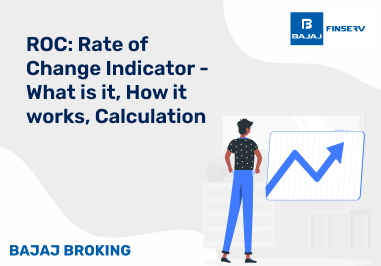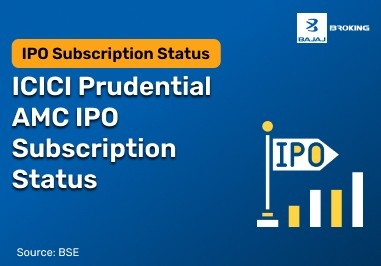If you are new to the trading world, then we are sure you might have come across quite a few confusing terms and ‘tick’ might have been one of them. A trading tick or simply tick, to make it easier, can be defined as the most minute price movement an asset makes in the market. As a trader, understanding what tick by tick trading is all about is important, and that is exactly what we will be taking a deep dive into, in this blog.
What is Tick by Tick Trading?
Tick by Tick Trading is the process of analysing and placing trades based on the tiniest price movements in stocks, or "ticks." Regardless of volume or direction, a single price change is represented by each tick. Tick charts give traders a more thorough picture of price action because they only update when a new transaction takes place, in contrast to conventional time-based charts. This method aids in more accurate identification of short-term price trends and market sentiment. Scalpers and intraday traders who depend on quick decisions frequently use it. Additionally, tick data is used to analyse market microstructure and backtest trading strategies.
Here is everything you need to know about tick by tick trading:
The stock market is an ever-changing platform where there are always new developments
The tiniest of changes in the market, or ticks, in this case, have the potential to cause major shifts
This, in turn, ends up affecting the choices traders make and the results associated with them.
Every stock has its tick size in trading and when analyzed in the right manner, trading in accordance with them can prove to be very beneficial for traders
How does Tick by Tick Trading Work?
Real-time price movement monitoring and prompt decision-making are key components of Tick by Tick Trading. Focus, self-control, and access to fast trading tools and data feeds are necessary for this trading approach.
Analyze the Market
Traders commence by examining real-time market data in order to comprehend transient price patterns. They generally look for prospective trade setups and entry points using advanced charts, technical indicators, and order book data.
Placing Quick Trades
Tick trading requires rapid execution. Responsive platforms allow traders to enter and exit trades in a few seconds. Timing and accuracy are critical, especially during periods of market volatility.
Earning from Small Moves
The goal of tick traders is to record brief price variations across a number of trades. Even though these movements might not seem significant, if done correctly, they can accumulate over time and produce predictable results.
Managing Risk
Given that trades occur frequently and within constrained price ranges, traders employ stop-loss and take-profit strategies. Preventing losses and protecting gains encourages trading sessions to be characterised by disciplined risk management.
Key Features of Tick by Tick Trading
Like every type of trading, tick by tick trading also has its specific features. Listed below are some of them:
Changes in tick by tick trading vary from asset to asset
With the help of tick by tick trading, a profit potential can be established
Changes in ticks are usually greater in securities that have a higher value.
The tick sizes of stocks are different and dependent on the security and the exchange the trade is being carried out through.
"Minimum price movement" is exactly as it sounds and points to the most minute price movement possible.
When the tick sizes of stocks are smaller, the chances of market liquidity improving are higher.
Ticks also impact the market volatility of assets.
Advantages of Tick by Tick Trading
If you are an active day trader, then tick trading can truly prove to be profitable for you. The very first advantage of tick by tick trading is how effective it is in filtering out any irrelevant price movements. This happens mainly because tick charts depend on the number of transactions carried out instead of the time intervals between them. As a result, there is better clarity regarding any significant market activities, which, in turn, helps traders take important trends into account and make better decisions.
Other than this, tick by tick trading also brings to the fore any and every price fluctuation that has been caused due to high-volume trades. This helps shed light on significant price movements. With such information to go forward with, traders can identify potential entry and exit points better. Tick by tick trading also helps traders recognize when a market trend is nearing exhaustion, they will be able to time their trades better.
Disadvantages of Tick by Tick Trading
While there are many undeniable advantages of tick trading, there are also certain drawbacks and disadvantages that traders need to be aware of. One of the biggest drawbacks of the tick by tick trading is the lack of time relevance as tick charts do not take time intervals into account. Thus, combining tick charts without other time-based trading strategies could be difficult for trades, making it difficult for them to carry out informed trades.
Tick charts are also notorious for the different bar sizes they produce during high market volatility, which leads to more inconsistent trade analysis, potentially leading to errors in trade orders. Traders who indulge in tick by tick trading might also need to deal with mental exhaustion as the charts need to be constantly monitored to capture small price movements.
The chances of tick trading reducing market liquidity also exist because even though smaller tick sizes increase trading options they also end up causing excessive noise, leading to greater transaction costs.
Additional Read: Trading Psychology
Uses of Tick by Tick Trading
There is no doubt that tick by tick trading can cause a major shift in how traders see and interact with the markets. The trading method provides significant transparency and blocks out the noise and the chaos that is usually associated with the market. Tick by tick trading undoubtedly provides more accurate insights than most other trading strategies.
With the help of tick-by-tick trading, traders can bid adieu to doubt their trade decisions or look to misinformation when they want to carry out important decisions. With the help of tick-by-tick charts, traders can identify trends more intricately. Tick-by-tick trading also rises to the top of the provisions of technical analysis, pointing out even the most minute divergence in stock prices.
Additional Read: How To Read Stock Charts For Trading?
Conclusion
Tick-by-tick trading can be considered as one that has caused quite a stir where stock value accuracies are cornered, aiding traders to carry out better-informed trades, focused on the most minute price changes in stocks. With its fair share of both advantages and disadvantages, when done right, tick-by-tick trading can prove to be exceptionally beneficial for traders without a doubt.














